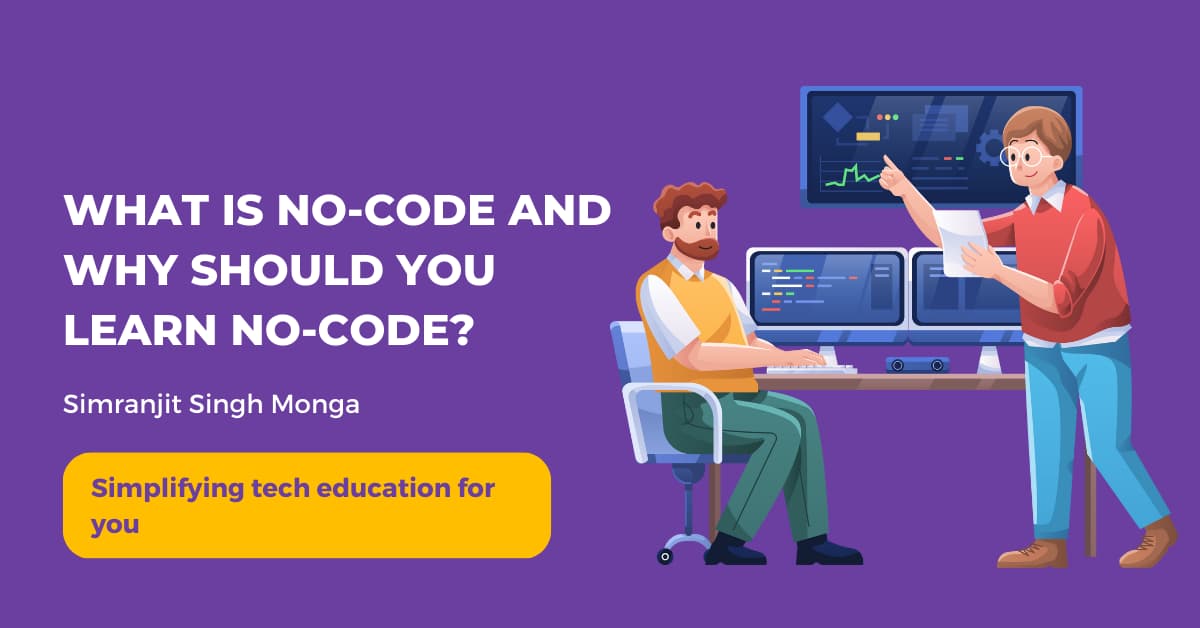In recent years, a new trend has emerged in the tech industry that has made it possible for non-technical individuals to create their own software solutions without needing to write any code. This trend is called no-code, and it’s been rapidly gaining popularity due to its ability to democratize software development and make it accessible to anyone.
In this article, I will explain what no-code is, why learning it can be valuable, and who should consider learning it. We’ll also offer some tips for getting started with no-code and provide examples of how people have used it to their advantage.
What is No-Code?
No-code refers to the practice of creating software applications and workflows without writing any code. Instead, no-code tools and platforms provide users with a visual interface where they can drag and drop elements, connect them together, and configure them to create a functioning app or workflow.
No-code is different from traditional programming because it removes the need for coding knowledge or experience. Instead, no-code platforms rely on pre-built components, templates, and integrations to enable users to build complex applications with minimal effort.
Some examples of popular no-code platforms include Zapier, Airtable, Webflow, Bubble, and Glide.
Benefits of No-Code
Learning no-code can offer several benefits, both for individuals and businesses. Here are some reasons why you should consider learning no-code:
- Saves time and money – No-code tools can help you create software solutions in a fraction of the time it would take to build them from scratch. This can save you money by reducing the need for expensive development resources.
- Empowers non-technical individuals – No-code empowers people who don’t have a technical background to create their own solutions without relying on developers. This can be especially valuable for entrepreneurs, small business owners, and marketers who need to create and iterate on software solutions quickly.
- Enhances problem-solving skills – Learning no-code can help you develop problem-solving skills and a deeper understanding of how software applications work. This can be valuable in any industry, not just in tech.
Who Should Learn No-Code?
No-code can be valuable for anyone who needs to create software solutions but doesn’t have the time or resources to learn traditional programming. Here are some examples of people who would benefit from learning no-code:
- Entrepreneurs – No-code can help entrepreneurs create and validate their ideas quickly without needing to hire developers or learn to code themselves.
- Small business owners – No-code can enable small business owners to create custom software solutions that streamline their operations and improve their customer experience.
- Marketers – No-code can help marketers create landing pages, lead capture forms, and other marketing materials without needing to rely on a developer or web designer.
How to Get Started with No-Code
If you’re interested in learning no-code, there are several resources available to help you get started. Here are some tips for getting started with no-code:
- Take courses – There are several courses available that can teach you the basics of no-code and how to use different no-code platforms.
- Join no-code communities – There are several online communities dedicated to no-code where you can connect with other no-code enthusiasts, ask questions, and learn from others.
- Experiment with different platforms – Try out different no-code platforms to see which ones you enjoy using and which ones are best suited for your needs.
Conclusion
No-code is a powerful trend in the tech industry that has the potential to democratize software development and make it accessible to anyone. Learning no-code can offer several benefits, including saving time

